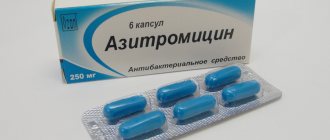Chronic pharyngitis is a chronic inflammatory process that occurs in the mucous membrane of the pharynx. The disease can be caused by many reasons, but is most often associated with infectious factors. Persistent dry mouth, severe cough, sore throat are the patient’s constant companions. Chronic pharyngitis can occur in three forms, each of which requires mandatory treatment by an ENT doctor. The causes, symptoms and methods of treating chronic pharyngitis and its exacerbations are the topic of our new article.
Every year, millions of people turn to an ENT doctor with a sore throat. One of the reasons causing this unpleasant symptom may be chronic pharyngitis.
Chronic pharyngitis is an inflammatory process that covers the mucous membrane of the pharynx without affecting the tonsils. Chronic disease occurs in waves: the stage of exacerbation is replaced by the stage of remission, when the symptoms of the disease are not very disturbing.
Chronic pharyngitis can act as an independent disease, but very often it itself is a complication of other pathological processes occurring in the body. Moreover, these processes are not always associated with inflammation of the ENT organs. In this case, it is necessary to first begin to treat the underlying disease, and only after proper treatment of the root cause will the symptoms of the chronic disease disappear.
Despite the fact that the disease occurs with mild symptoms (for example, without high fever), the disease must be treated! Failure to promptly contact an otolaryngologist during an exacerbation of the disease can lead to serious complications: the spread of inflammation to nearby ENT organs, as well as to other human organs and systems.
Like any chronic disease, it is impossible to completely cure chronic pharyngitis, but with the help of well-chosen treatment, you can significantly reduce the number of exacerbations and make the remission stage much longer (without proper treatment, the number of exacerbations reaches more than three times a year).
The causes, symptoms and treatment of chronic pharyngitis are the topic of our new article.
Reasons for the development of the disease
Damage to mucous structures can occur under the influence of two types of factors.
These are infectious and non-infectious. The infectious etiology of inflammation includes:
- entry of viral agents into the body;
- the presence of bacterial microflora - usually streptococci, staphylococci lead to pharyngitis, in rare cases - pneumococci;
- mycotic lesions - when yeast fungi of the genus Candida come into contact with the mucous tissues, the development of pharyngomycosis or pharyngitis of the fungal type occurs.
Non-infectious causes of the disease include:
- throat injury - occurs when the mucous structures of the throat are scratched with solid food or instruments used in medicine;
- damage to the pharynx by boiling water or vapors;
- inadequate response of the body to foreign proteins;
- constant irritation of the upper respiratory tract from tobacco smoke, aggressive chemical compounds, dust;
- pathologies of the digestive system - with reflux esophagitis or neoplasms of the esophagus, there is a constant reflux of acid into the esophagus. It reaches the pharynx and causes irritation, which leads to various cell damage and inflammatory processes.
The following segments of the population are susceptible to the development of pharyngitis:
- suffering from chronic diseases, pathologies of the nasal cavity and nasopharyngeal apparatus;
- often suffer from colds;
- taking drugs with antibacterial activity or other drugs that weaken the immune defense;
- undergoing courses of radiation treatment or chemotherapy;
- those suffering from immunodeficiency;
- having diseased teeth and gums, which are foci of infection.
Predisposing factors
In order for acute pharyngitis to develop, additional pathological conditions must be present.
The disease occurs due to chronic infections of the nasopharynx (sinusitis, sinusitis), throat (tonsillitis), as well as when there are sources of microbial proliferation nearby (carious teeth).
For the symptoms of the disease to manifest, a decrease in immunity and a lack of vitamins are also necessary. Therefore, factors predisposing to the formation of an acute inflammatory process include:
- exhaustion of the body due to long-term diets, vitamin deficiency and metabolic disorders;
- local and general hypothermia;
- taking medications that negatively affect the immune system;
- severe chronic diseases, especially infectious ones;
- living and working in unfavorable environmental conditions (increased concentration of smoke, gases and irritants in the air);
- abuse of alcohol and tobacco products;
- sources of chronic infection near the throat (in the paranasal sinuses, trachea, in the nasal cavity);
- Gastrointestinal diseases - gastroesophageal reflux, hiatal hernia, gastritis, ulcers, dysbacteriosis.
If symptoms occur regularly, it is necessary to identify the cause, be it chronic inflammation of an infectious nature, gastrointestinal diseases, or immunodeficiency conditions.
Treatment methods
Chronic pharyngitis - treatment in adults may vary depending on the etiology, type and stage of development of the disease. First of all, for any type of pharyngitis, the doctor prescribes medications that relieve pain. These include painkillers, antibacterial and antiseptic medications.
Pharyngitis, which is of an infectious nature, is treated mainly with the following methods:
- mouth rinse;
- atomization of the larynx;
- taking lozenges;
- taking pills;
- taking immunomodulators.
The latter method is not used to cure symptoms, but to establish adequate functioning of the immune system.
Treatment of chronic pharyngitis involves the use of surgery. The most common use of laser therapy and cryodestruction by exposure to liquid nitrogen. Atrophic pharyngitis can be cured by inhalation and taking tablets containing iodine and vitamin A.
Specific brands of drugs are determined individually by the attending physician, taking into account all examination data. The duration of treatment depends on the severity of the disease and the patient’s health condition. Typically, it ranges from 7 to 14 days.
Simultaneously with symptomatic treatment, it is necessary to take measures to eliminate the pathologies that caused the development of pharyngitis. The patient must also give up bad habits, lead a healthy lifestyle and review the diet in favor of healthy foods.
Medications
There are several ways to treat chronic pharyngitis. Taking medications is one of them. This method is prescribed by the attending physician based on the results of a survey and research.
The following drugs are usually prescribed:
| Name | Description | Admission course | How to use | For what type of infection is it effective? | price, rub. |
| Paracetamol | White cylindrical tablets with a score on one side | From 5 to 7 days | Orally or rectally 4 times a day | Viral | From 15 |
| Penicillin | Cylindrical white tablets | Up to 5 days | Orally 3-4 times a day every 4 hours | Bacterial | From 10 |
| Ibuprofen | Homogeneous transparent gel. Has a characteristic smell | From 5 to 7 days | Rectally or orally 3 to 4 times a day, 800 mg at a time | Viral | From 75 |
| Clindamycin | White vaginal cream with a characteristic odor | From 3 to 7 days | Intravaginally 1 time per day | Bacterial | From 400 |
| Silver nitrate | Colorless rhombic crystals, tasteless and odorless | Once | Suitable for chemical cauterization. Performed only by a qualified physician | In hypertrophic form | From 130 |
Traditional methods
Chronic pharyngitis - treatment in adults can be carried out not only with medication, but also with the help of traditional medicine recipes.
The most popular of them is the use of herbs, from which they make:
- Tea. To prepare, you need to mix 1 tbsp. l. St. John's wort, 1 tbsp. l. mint, 1 tbsp. l. yarrow and pour boiling water over them. Take 1 time per day before bedtime. It is allowed to add 1 tsp. honey
- Infusion. 1 tbsp. l. mix dry chamomile and plantain leaves and oak bark. Pour the mixture into 250 ml of boiling water and leave for 3-4 hours. Gargle with the infusion at night.
- Inhalation. It is carried out using any type of herbs and sea buckthorn or mint oil. You need to breathe the fumes once a day for 30 minutes. before sleep.
To carry out inhalation, you need to pour 250 ml of hot water into a glass, add a few drops of essential oil and breathe over the steam for 50-10 minutes. You can also add any herbs to the water to double the effect.
Other methods
The most effective method of treating chronic pharyngitis is inhalation. This method involves exposing inflamed mucous membranes to drugs in a vapor state.
The procedure lasts from 8 to 10 minutes. and is carried out daily 4 times a day for 60 minutes. before meals or the same amount of time after meals. After inhalation, the patient must remain silent for 30 minutes. in a lying position.
There are several recipes for solutions that can be prepared at home to treat chronic pharyngitis:
- 250 ml of boiled water with the addition of 1 tsp. soda;
- 250 ml of hot water with 1 Furacilin tablet dissolved in it;
- 1 tsp diluted in 250 ml of water. propolis tincture and 2 tsp. glycerin;
- sea salt, heated to 75° with the addition of 3-4 drops of mint, pine or eucalyptus essential oil.
The duration of the course is usually from 7 to 14 days.
Prevention of chronic throat diseases
Chronic pharyngitis and tonsillitis can be prevented if you follow preventive measures. Preventing a disease is a much lower price than what you have to pay for treatment.
Healthy lifestyle
Running to health
Chronic pharyngotonsillitis with a healthy lifestyle goes away much faster, the patient regains his health, while simultaneously creating a reserve of it. A healthy lifestyle includes behavior and nutrition, adherence to simple rules that do not require material costs.
Rules for a healthy lifestyle:
- You definitely need a good night's sleep, which requires at least 8 hours on average. Sleep is an integral part of our life, when self-regulation of the body occurs, its fine tuning.
- Meals should be organized so that you do not overeat, and the food itself is, if possible, hot and contains dietary fiber, vitamins, fruits, and vegetables. Sugar and spices are added to dishes in minimal quantities.
- Try not to eat at night.
- After eating, it is not recommended to drink water for an hour.
- Strong tea and coffee should be excluded from the daily diet.
- Stop drinking alcohol and tobacco.
- Do not eat canned foods.
- active motor mode is required. Even if the work involves a sitting position, you need to provide breaks for warm-up exercises.
- Observe the rules of personal hygiene, wash your hands with soap when coming home, after eating and using the toilet.
- Positive emotions are essential for health, so you need to avoid unpleasant situations.
- For a healthy lifestyle, it is imperative to spend two hours a day in the fresh air.
The reasons for its occurrence
In order to prevent the development of swelling in the laryngeal area, which occurs with regular alternating periods of exacerbations and subsidence, which is not completely possible to cure, it is necessary to study the basic prerequisites that can provoke the development of the disease. The causes of chronic laryngitis, according to all leading otolaryngologists, lie in the following negative factors that have a direct impact on a person:
- genetic features of the structure of the pharynx, which cannot prevent the penetration of pathogenic microorganisms and bacteria into the body. They settle in large quantities on its mucous surface, thereby provoking the development of inflammation on it;
- a person’s exposure to frequent infectious diseases of a viral or bacterial nature, under the influence of which the regularly inflamed mucous membrane of the larynx simply does not have time to recover and is constantly in a state of hyperemia;
- a therapeutic course that is incorrectly selected or carried out with serious errors, which is aimed at stopping acute laryngitis. Ignoring treatment measures is considered especially dangerous and always provokes the transition of pathology to a regularly relapsing stage;
- exposure to harmful habits, such as prolonged and excessive consumption of alcohol, which literally burns the mucous membrane of the larynx, and smoking, which causes the development of an inflammatory process in it;
- untreated caries, which is a source of penetration of pathogenic microorganisms into the body, most of which settle on the surface of the pharynx and begin to become active over time;
- problems in respiratory function that arise for various reasons - polyps in the nasopharynx, frequent rhinitis, allergic reaction. In these cases, the listed prerequisites are not the direct factor causing this type of pathological swelling of the larynx. Their negative role lies in the fact that due to the inability to breathe through the nose, a person carries out this action with the mouth, thereby chilling the throat;
- increased load on the vocal cords, which is always present among teachers, actors and singers, as well as those people who express their emotions with their voices, excessively straining the entire larynx;
- disorders in the immune system, since with reduced immunity the body is defenseless against pathogenic microbes that enter it.
This pathology of the throat and, directly, the vocal cords, such as chronic laryngitis, has numerous causes that determine its occurrence. That is why attending physicians always advise their patients to know not only them, but also the possible symptoms of this form of ENT disease as accurately as possible, since only this will contribute to the beginning of adequate treatment, which can lead to a long period of remission in the shortest possible time.
Causes and risk factors
The causes of chronic pharyngitis can be both pathogenic microorganisms and the aggressive effects of unfavorable environmental factors.
The vast majority of pathogens that most often provoke the development of an acute disease, which, if diagnosed untimely and incompetently treated, transforms into a chronic form, are represented by the following viruses:
- rhinoviruses (more than 80% of all morbidity cases);
- adenoviruses;
- coronaviruses;
- influenza and parainfluenza viruses;
- respiratory syncytial virus;
- herpes simplex viruses types I and II;
- enteroviruses;
- Coxsackie virus;
- Epstein–Barr virus;
- cytomegalovirus.
In some cases, viruses are a kind of “pioneers” that create optimal conditions for the activation of their own opportunistic microflora and the addition of a secondary bacterial infection. More often, inflammation of the pharyngeal mucosa is caused by neisseria, diphtheroids, viridans (non-hemolytic) streptococci, β-hemolytic streptococci, Staphylococcus epidermidis, corynebacteria (with the exception of diphtheria), and fungi of the genus Candida.
In 80% of cases, chronic pharyngitis is caused by rhinoviruses
In addition to viral and bacterial agents, the cause of chronic pharyngitis can be systematic exposure to aggressive physical or chemical factors:
- ionizing radiation;
- dust;
- volatile chemicals (toluene, formaldehyde, paint and varnish compounds, hydrocarbon processing products, etc.);
- hot vapors and liquids;
- mechanical injury to the mucous membrane;
- combustion products;
- allergens, etc.
The development of chronic pharyngitis is facilitated by exposure to local and general risk factors on the body, which include:
- structural features of the mucous membrane;
- work in hazardous industries (metallurgical and other types of industry that involve work in a hot shop, coal mines, oil refineries, factories for the production of paints and varnishes, pesticides, fertilizers, etc.);
- work in the emergency rescue field;
- smoking, alcohol abuse;
- difficulty breathing through the nose (allergic rhinitis, deviated nasal septum, polypous growths);
- changes in endocrine background (menopause, hypothyroidism, etc.);
- hypo- or avitaminosis;
- state of immunosuppression;
- diseases of the gastrointestinal tract;
- general hypothermia of the body;
- the presence of severe chronic diseases (diabetes mellitus, renal and heart failure, bronchial asthma, etc.);
- the presence of a focus of chronic infection in the oral cavity or nearby ENT organs;
- dry, hot climate;
- unfavorable environmental conditions;
- old age (age-related involutional changes in the mucous membrane).
How to treat pharyngitis during pregnancy
Pharyngitis during pregnancy is a dangerous condition. If the disease is provoked by beta-hemolytic streptococcus, there is a danger of the pathogen influencing the fetus. The use of many effective medications while pregnant is prohibited due to side effects.
Basic principles of treatment of pharyngitis in pregnant women:
- Gargling with decoctions of calendula, rose hips, chamomile, sage, plantain, furacillin solution;
- Providing peace;
- Taking medications recommended by a doctor;
- Using a saline-soda solution with iodine;
- Drink plenty of warm drinks;
- A gentle diet with hot dishes, excluding coarse fibers;
- Drink plenty of still mineral water and fortified teas;
- Liquid diet.
In addition to home procedures, a mandatory visit to the doctor is recommended during pregnancy.
Traditional methods of treating pharyngitis
There are popular recommendations for treating pharyngitis at home. The following recipes are used for home therapy:
- Mix an egg in a glass of warm milk with a teaspoon of honey and butter. You need to drink in the evening and in the morning;
- Stir chicken yolk in a glass of warm milk. Rinse or drink the product while it is warm. To increase the effectiveness of the procedure, periodic massage of the chin and throat is recommended;
- Distraction therapy with mustard plasters and cupping. Compresses based on vegetable oil and honey have a good effect;
- Treatment of pharyngitis at home is carried out by inhalation and rinsing 3-4 times a day. Warm herbal infusions are prepared in a dose of 10 grams per 200 ml of water;
- Herbal baths based on eucalyptus, thyme;
- Gargling with sea water;
- Chewing 2-3 cloves daily;
- Sucking lozenges with menthol and antiseptics help with viral infections. To cleanse the mucous membrane, it is recommended to use sucking candies at least 2-3 times a day;
- Table salt solution for rinsing;
- Lemon juice added to a glass of water.
For atrophic inflammation of the throat, it is recommended to humidify the air where the patient is. When breathing through the mouth, the mucous membrane dries out. If you don’t have a humidifier at home, indoor plants and water containers are recommended.
Chamomile-based compresses have an anti-inflammatory effect. Placed on the front of the neck. Cover the compress with a warm woolen cloth. Keep until cool.
Garlic is considered a natural antiseptic. Contains selenium, which has an antibacterial effect. It is better to use garlic in its pure form. A spoonful of grated horseradish diluted in a glass of warm water has a similar effect.
Inhalations with pine cones (20 grams per 200 ml of water) help with sore throat if done at least 4-5 times a day.
Melissa and mint are calming when used in solutions of 15 grams per 200 ml.
For laryngitis, a decoction of anise seeds is recommended:
- 0.5 cups of seeds are added to boiling water;
- Cook for 15 minutes.
Propolis, calamus, and ginger root are used to lubricate the throat.
Method of rinsing and taking medications
Frequent gargling has a good effect:
- Various decoctions of medicinal plants, such as chamomile, calendula or sage.
- Miramistin.
- Rotokan.
- Furacilin and others.
Against the background of processing the pharynx with a Lugol or Iodinol raster. To speed up the relief of the patient’s condition, treatment is sometimes supplemented with antiseptic agents for topical use:
| A drug | Photo | Price |
| Ingalipt | From 86 rub. | |
| Hexoral | From 192 rub. | |
| Bioparox | From 350 rub. |
In order to reduce tissue swelling in the affected area, it is possible to prescribe antihistamines, such as:
| A drug | Price | Photo |
| Diazolin | From 57 rub. | |
| Tsetrin | From 162 rub. | |
| Ketotifen | From 51 rub. | |
| Zyrtec | From 198 rub. | |
| Fenistil | From 331 rub. | |
| Suprastin | From 132 rub. | |
| Loratadine | From 35 rub. |
Symptoms of the disease
Throat with chronic pharyngitis
Treatment of chronic pharyngitis largely depends on the nature of the disease and what symptoms appear. This disease can be cured only if therapy is targeted at eliminating the cause that triggered its occurrence.
Symptoms of chronic pharyngitis in adults can be very different, it all depends on the form of the disease. The catarrhal type of pathology has the following symptoms:
- severe swelling of the pharynx;
- sensation of a foreign body in the throat;
- accumulation of mucus on the back wall in large quantities;
- enlarged lymph nodes.
In hypertrophic chronic pharyngitis, the symptoms are more pronounced and manifest themselves in:
- increasing the density of the pharyngeal mucosa;
- the appearance of atrophied areas;
- the formation of small red dots on the throat;
- secretion of thick viscous mucus;
- voice disturbance and loss of appetite.
Signs of chronic atrophic pharyngitis can be distinguished as follows:
- breathing is difficult, bad breath appears;
- lymph nodes enlarge;
- when you cough, thick crusts come off;
- constant cough and sore throat.
With granulosa-type pharyngitis, the pharyngeal mucosa becomes white, and the granules acquire a red tint, which is clearly visible in the photograph. Since chronic pharyngitis has various symptoms, treatment should begin only after the form of the disease and the stage of the pathological process have been determined.
Atrophic pharyngitis is a chronic disease, the appearance of which is influenced by a number of factors:
- Acute phase that has not received proper treatment.
- Endocrine diseases: diabetes, hypothyroidism and others.
- Inflammatory processes occurring in the oral cavity.
- Disturbances in the gastrointestinal tract, in which bile is released into the esophagus.
- Bad habits: drinking alcohol and smoking.
- Use of vasoconstrictor drops and sprays.
- Diseases of the nasopharynx: sinusitis, rhinitis, sinusitis and others.
Interesting fact! It has been established that atrophic pharyngitis in most cases occurs in the adult population, while among children such a disease is very rare.
In the early stages of the disease, the patient may not experience any special symptoms. But as the disease progresses, the following symptoms appear:
- dryness and sore throat;
- barking, dry cough;
- the voice changes timbre;
- drool becomes thick;
- crusts formed from sputum on the back wall of the larynx are difficult to separate.
The patient may experience irritability and nervousness, and sleep is often disturbed. Atrophic pharyngitis in its classical form occurs without an increase in body temperature. When examining the throat, a doctor may detect other symptoms of the disease:
- The mucous membranes have a pale pink tint.
- The wall of the larynx is thinned, causing blood vessels to become visible.
- The mucous membranes are dried out and have a slight sheen.
- Mucus in the form of dried crusts covers the walls of the larynx.
The main symptom of atrophic pharyngitis is pain and discomfort in the throat. The patient has a constant desire to clear the throat passage due to mucus, which he is forced to constantly swallow, which is sometimes difficult and terribly annoying.
In addition, other symptoms of the disease may be observed:
- There is a cough. It is necessary to cough up thick mucus. During it, crusts that are quite large in size can be released.
- There is emotional instability. Due to constant coughing, the patient becomes irritable and sleeps poorly.
- If you feel the upper cervical lymph nodes, you may notice their swelling, which is accompanied by pain.
- The mucous membrane of the throat turns pale, looks dry, and a large number of blood vessels are visible on it.
- The pharyngeal reflex is impaired. It is especially difficult for a person to swallow solid food. During this, the patient may experience severe pain.
- There is constant thirst. Therefore, a person has to drink too much liquid - more than 2 liters per day.
In this case, the patient’s general well-being worsens, but only slightly. An increase in temperature is observed only during exacerbations of the disease.
If atrophic pharyngitis appears due to problems with the gastrointestinal tract, the patient will complain of severe heartburn. Sour belching and bad breath may also occur. In this case, accompanying symptoms are stomach pain and bloating. Unpleasant symptoms will subside after treatment of gastric problems.
Additional treatment conditions
During an exacerbation, it is necessary to prescribe antibacterial drugs:
| A drug | Photo | Price |
| Amoxiclav | From 243 rub. | |
| Solutab | From 243 rub. | |
| Hemomycin | From 143 rub. | |
| Suprax | From 634 rub. |
In the case of granulosa hypertrophic form, the following are used for therapeutic purposes:
- cryodestruction,
- laser coagulation,
- diathermocoagulation.
At the end of the course of antibiotics, drugs are prescribed whose action is aimed at restoring the natural microflora of the pharynx:
| A drug | Photo | Price |
| Lysobacter | From 289 rub. | |
| Imudon | From 440 rub. | |
| IRS-19 | From 498 rub. |
Therapy for the atrophic form is supplemented by:
- removing identified crusts from the surface of the mucosa,
- lubricating the pharyngeal mucosa with sea buckthorn, peach or apricot oil.
Treatment, regardless of the form, is quite long, so you should be patient, without this it is impossible to cure a chronic illness.
Treatment of chronic pharyngitis in adults
Depending on the nature of pharyngitis, the patient may be prescribed antiviral, antibacterial, antiallergic drugs and drugs of some other groups.
Treatment of any form of pharyngitis involves the complete elimination of the factors that caused the disease. If chronic pharyngitis is a consequence of other diseases, then proper treatment is necessary. Quitting smoking and drinking alcohol is necessary in order to quickly get rid of the symptoms accompanying chronic pharyngitis.
Treatment with antibiotics is almost always necessary for exacerbations of the chronic form of the disease. Systemic antibiotic therapy is required in cases where the symptoms of the disease are severe. In other cases, therapy with topical drugs (Bioparox, IRS-19, Imudon) is prescribed.
In addition to antibacterial therapy, patients are recommended to gargle with antiseptic and anti-inflammatory solutions and herbal decoctions (chamomile, sage). Tablets, lozenges and lozenges (Grammidin neo, Faringosept, Septolete) and sprays (Cameton, Strepsils, Hexoral), which contain anti-inflammatory, antiseptic, analgesic substances and essential oils, are also used to treat exacerbations of chronic pharyngitis.
The effectiveness of treatment increases with the use of physiotherapeutic methods of treatment (UHF, inhalation with essential oils or soda, ultrasound).
To improve the body's resistance to infections, it is necessary to prescribe vitamin therapy and drugs that strengthen the immune system.
In addition to drug treatment, patients should follow a diet necessary to spare a sore throat. Do not eat hot or cold food, spicy, salty or sour foods. It is recommended to drink plenty of warm drinks (not hot!), it is useful to drink warm milk with the addition of honey and butter.
Varieties
Depending on the clinical course of chronic pharyngitis, the following clinical forms are distinguished:
- catarrhal,
- hypertrophic (granular),
- atrophic.
The most favorable course is considered to be the catarrhal form, because it is characterized by inflammatory changes in the surface layer of the mucosa and moderate swelling in the affected area.
In the hypertrophic form, pathological growth of the mucous membrane is noted, which causes the formation of nodules and tubercles.
The atrophic form is unfavorable in terms of prognosis, because the mucous membrane becomes thinner, as well as its increased dryness. Treating the atrophic form of pharyngitis in the chronic stage is extremely difficult and takes more than one month.
Treatment of pharyngitis
If a patient is diagnosed with acute pharyngitis or there has been a sharp exacerbation of the chronic form of the disease, and at the same time there are no pronounced disorders in the general condition of the person, then in this case symptomatic treatment of pharyngitis is used
It is important that the patient follows a diet for some period, without eating foods that irritate the mucous membrane. During the acute period, you should not eat hot and very cold foods, sour and salty foods.
It is equally important to drink plenty of fluids to enhance the removal of toxins from the body. You need to drink at least two liters of different drinks per day. Hot baths for the feet and warming compresses placed on the front of the neck are indicated. You can use steam inhalations made at home, and also drink warm milk with honey. It is very important to completely quit smoking during your illness. For uncomplicated pharyngitis, antibiotic treatment is not practiced.
Sometimes the doctor prescribes local antimicrobial drugs, as well as antibacterial agents. For pharyngitis, an antiseptic drug is usually prescribed - this can be hexetidine, chlorhexidine, benzydamine, ambazone, etc. Local anesthetics and essential oils (tetracaine, lidocaine, menthol) are also used. It is possible to use drugs containing natural antiseptics and vitamins.
Antimicrobial agents are used for gargling, in the form of inhalations, insufflations, tablets and lozenges
It is important that drugs that have a broad spectrum of action against microbes and viruses are applied to the mucous membrane. Moreover, they should not be toxic, causing irritation and allergic reactions.
Preparations in the form of lozenges are usually prescribed for mild forms of pharyngitis.
It is important to note that most of these drugs contain chlorhexidine, which is a toxic substance. Therefore, excessive doses of drugs and their uncontrolled use should not be allowed.
The latter especially concerns children.
Some drugs containing, for example, propolis, iodine derivatives, sulfonamides can cause allergic reactions. Medicines that contain essential oils and herbal antiseptics can also provoke allergies in some patients.
To reduce pain in the throat, you can use non-hot solutions of furacillin and a light solution of potassium permanganate for gargling. During the acute period, rinsing can be done every hour.
If pharyngitis occurs too often in a person, then this is direct evidence of problems with the body’s defenses. Therefore, treatment of pharyngitis should in some cases include correction of immunity.
Therefore, only a doctor should prescribe the optimal drug for the treatment of pharyngitis, guided by its antimicrobial activity, as well as the individual characteristics of the patient.
Acute pharyngotonsillitis
This disease is considered one of the most common diseases in the work of first-line doctors. This disease accounts for more than 37% of all upper respiratory tract infections. Most often, pharyngotonsillitis occurs among young people between the ages of five and fifteen years. The peak incidence occurs from November to May. Acute pharyngotonsillitis is most often considered a viral disease. therefore, in many cases antimicrobial therapy is not required. Treatment is with antibiotics, the course is 10 days. Treatment of the disease includes:
- diet;
- treatment of the throat with sprays;
- resorption of tablets;
- taking vitamins;
- taking antibiotics.
Substances of natural or semi-synthetic origin that inhibit the growth of living cells, usually prokaryotic or protozoan, are prescribed by a doctor. The therapist selects antibiotics so that the drug has a broad effect with slow absorption into the mucous membrane. Indications for choosing the most appropriate medication for treatment:
- prolonged inflammatory process;
- the appearance of purulent otitis media;
- the appearance of pneumonia;
- high temperature for more than two days;
- angina;
- fever.
Traditional medicine in the treatment of chronic pharyngitis
Some traditional methods of treatment are quite effective in the fight against pharyngitis. For example:
- milk and honey;
- propolis tinctures;
- garlic and honey syrup;
- inhalation over potato broth.
Important!
A good effect can be achieved with the maximum combination of folk and traditional medicine. These procedures should be carried out strictly according to a special schedule without getting carried away. Otherwise, you may end up doing more harm than good.
Diagnostics
The diagnosis is made by a doctor based on complaints, medical history and the results of laboratory and instrumental research methods.
The main diagnostic methods include:
- physical examination;
- epi-, meso-, hypopharyngoscopy;
- bacteriological culture with determination of antibiotic sensitivity of the discharge from the surface of the pharyngeal mucosa.
According to indications, the following may be additionally prescribed:
- cytological examination;
- endoscopy of the nasopharynx and hypopharynx;
- esophagogastroduodenoscopy.
Endoscopic examination may be required to diagnose the disease.
On examination, regional lymph nodes are usually found to be enlarged and moderately painful on palpation. You can see what the throat looks like during illness when an ENT performs an endoscopic examination and takes photos of the affected areas.
The bacteriological method of examining scrapings of the pharyngeal mucosa allows us to identify the nature of the agent that caused the inflammation. In this case, rapid determination of streptococcal antigen plays an important role.
Upon examination, signs of an inflammatory process in the mucous membrane of the pharynx of bacterial or viral etiology are revealed
During pharyngoscopy, hyperemia and swelling of the mucous tissue of the pharynx is observed, the back wall is covered with mucous or mucopurulent discharge. Hyperemia and swelling of the palatine tonsils, arches, and the mouth of the auditory tubes are also possible. On the back and side walls of the pharynx, lymphadenoid follicles are identified in the form of rounded bright red elevations (granules).
In the atrophic form of the disease, dryness, pallor and thinning of the pharyngeal mucosa are noted.
Complications
The development of the atrophic form is accompanied by:
- feeling of dryness in the throat,
- the appearance of frequent non-productive dry cough,
- feeling of constant discomfort.
An objective examination of the affected area reveals thinned mucosa, which is dry and crusts and areas with hemorrhages can be detected on its surface.
Exacerbation of the chronic course of pharyngitis is often accompanied by damage to nearby organs, which causes the development of laryngitis, tracheitis or tonsillitis.
When visiting an otolaryngologist, you should not hide the existing symptoms of the pathology in order to speed up the making of an accurate diagnosis and, accordingly, start therapy in a timely manner.
Diffuse catarrhal chronic pharyngitis
In fact, this chronic pharyngitis is a total catarrhal inflammation of the pharynx, including the mucous membrane of the nasopharynx, often the auditory tube and especially the excretory ducts of the anterior paranasal sinuses. Chronic pharyngitis is more common in childhood due to the more significant development of the lymphadenoid apparatus, the seat of chronic infection, and less often in adults, in whom this apparatus is largely atrophied.
In the pathogenesis of the disease, an important role is played by infection of the nasal cavity and impaired nasal breathing, which excludes the protective functions of the nasal mucosa from the act of breathing and causes contact of the air entering the respiratory tract with the mucous membrane of the pharynx. Mouth breathing is a significant aphysiological factor that negatively affects many tissue processes in the pharynx, ultimately leading to disturbances in local metabolism, hypoxia, drying out of the protective layer of mucus containing biologically active substances that protect the mucous membranes of the pharynx from harmful atmospheric factors, and finally, everything this taken together leads to disruption of cellular homeostasis and deficiency of local immunity. All these factors, acting on different germs of the mucous membrane, lead to various pathomorphological changes, which are reflected in the clinical names of various forms of pharyngitis.
Symptoms of chronic pharyngitis
Symptoms of chronic pharyngitis consist of the patient’s complaints, his general and local objective condition. Subjective signs of chronic diffuse catarrhal pharyngitis without exacerbation in children are absent; in adults they are manifested by moderate complaints of a sore throat, viscous, difficult to expectorate discharge, increased gag reflex due to the accumulation of crusts, and cough. Patients often resort to gargling at night. In the morning, the symptoms noted above are more pronounced.
[], [], [], [], []
How to recognize chronic pharyngitis?
During pharyngoscopy, against the background of a general, not very bright hyperemia of the mucous membrane on the back wall of the pharynx and soft palate, viscous mucous deposits are determined, which are difficult to remove with tweezers. During the cold season, hyperemia of the mucous membrane increases, the amount of mucous secretions increases, and they become more liquid.
When the pharynx is infected with adenoviruses or bacteria (its own conditionally pathogenic microbiota), the mucous discharge becomes mucopurulent in nature and the inflammation acquires clinical signs of acute or subacute bacterial diffuse pharyngitis. Headache, low-grade body temperature and all signs of moderate intoxication appear.
[], [], [], [], []
Major complications
You should not self-medicate, because this often leads to the development of life-threatening conditions for the patient; only a doctor knows how to properly treat chronic pharyngitis.
If medical recommendations are not followed or treatment is prescribed incorrectly, the risk of complications during exacerbation of pharyngitis increases:
- tonsillitis,
- laryngitis,
- tracheitis,
- bronchitis,
- regional lymphadenopathy.
When a chronic course of pharyngitis appears, some patients experience the development of inflammatory diseases of a systemic nature:
- glomerulonephritis,
- myocarditis,
- rheumatism.
The most serious complication is malignancy of the atrophic form.












